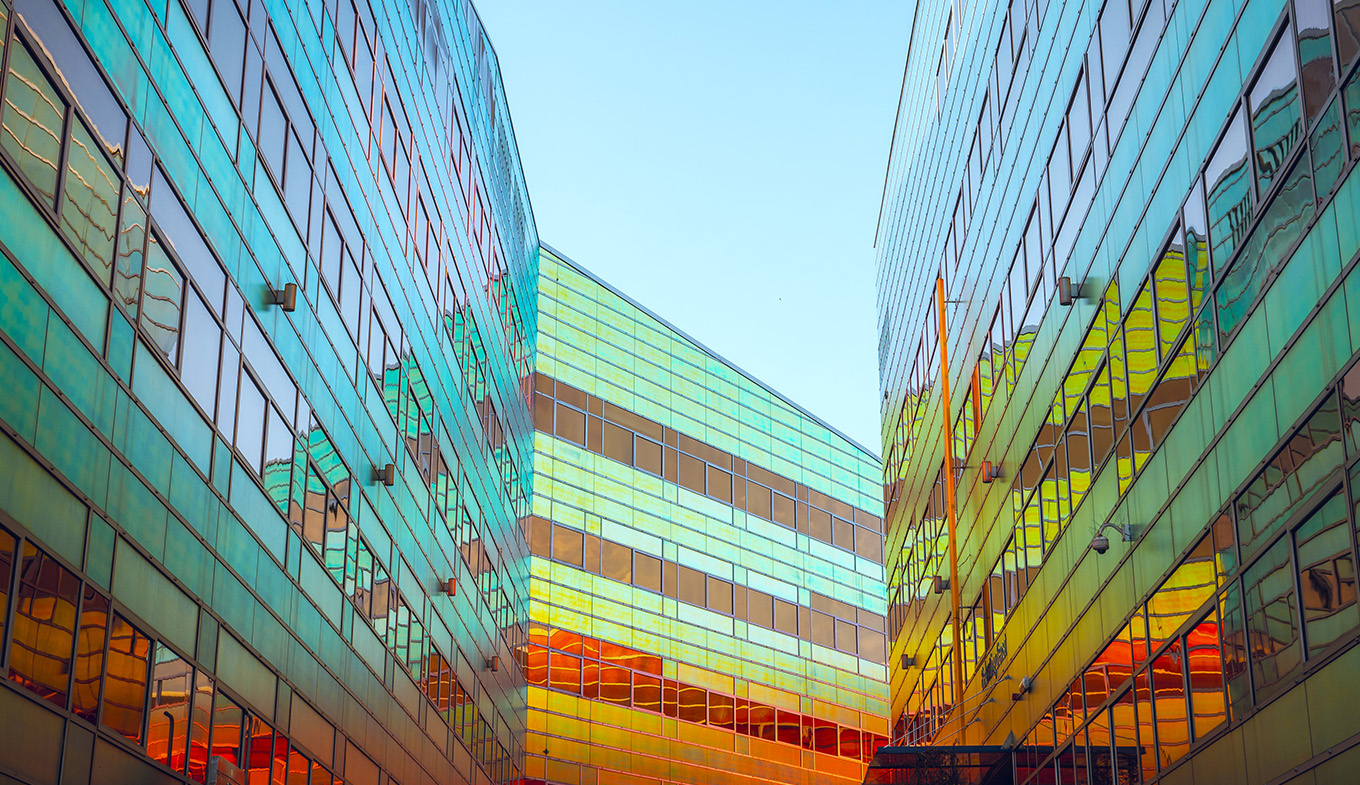
Dutch architecture: from heritage to modern masters
Walk through any town or city in the Netherlands and you witness its past in brick and stone. From the famous 17th-century canal houses built for wealthy merchants in the Dutch Era, to striking modernism, the buildings and structures that you can see here reflect the long and rich history of the Netherlands. And with new sustainable practices and innovations, Dutch architecture continues to make a global impact. Find out where to see the most important, beautiful and impressive buildings.
- Follow in the footsteps of architects like Rem Koolhaas and Pierre Cuypers.
- Experience the rich layers of Dutch architectural history.
- Discover unique architectural masterpieces across the country.
🎧Listen to the podcast: How the Netherlands is building the future
From 17th-century splendor to modernist ideals
If you think of Dutch architecture, does your mind travel to the grand – if slightly wonky – 17th-century townhouses on the Amsterdam canals? The modernism of the early 20th century? The global impact of Rem Koolhaas? Or the floating neighborhoods, circular projects and 3D-printed bridges of today’s innovators? All these elements are expressions of the rich history of the Netherlands, its changing fortunes, ambitions and ideals.
Did you know?
The Cube Houses in Rotterdam rest on just one pillar, with the cubes tilted at about 45 degrees?
The architecture of the Dutch Era

As the Dutch overseas empire reached the height of its power – the Dutch Era – the country’s prosperity led to a flourishing of arts and culture and rapid growth of its cities. Civic buildings such as town halls were rebuilt or newly constructed, and prosperous merchants flouted their status and wealth by commissioning grand townhouses, most famously those along the newly built Amsterdam canal belt.
In the early years of the Dutch Era, the prevalent style was a mix of gothic traditions and the new influence of the Italian Renaissance; buildings were richly decorated with pilasters and pediments, often using a combination of light natural stone and red brick. Among the best-known architects of this time is Hendrick de Keyser, who designed the East India House, the Westerkerk and the Zuiderkerk in Amsterdam, the city hall in Delft and many other buildings of the period.
Classicism: glorious simplicity

From around the 1630s onwards, classicism came to be the most important style of Dutch architecture, with symmetrical proportions harking back to classical antiquity, prominent central projections and details such as triangular pediments. One of the key drivers of classicism in the Netherlands was Jacob van Campen, who designed Amsterdam’s Royal Palace (then the city hall). Alongside his contemporary Pieter Post, Van Campen also designed the Mauritshuis in The Hague, now a museum that’s home to many significant paintings by Dutch Masters.
Post also designed many important buildings of this time, including the city hall in Maastricht, the weighing house in Gouda and the Huis ten Bosch, now home to the Dutch royal family. Other highlights of classicist architecture are Amsterdam’s Royal Maritime Museum and Amerongen Castle near Utrecht. As the Dutch Era drew to a close, the influence of classicism waned and over the 18th century, a variety of styles, including baroque and rococo, were used.
Gothic revival: Cuypers and the Rijksmuseum
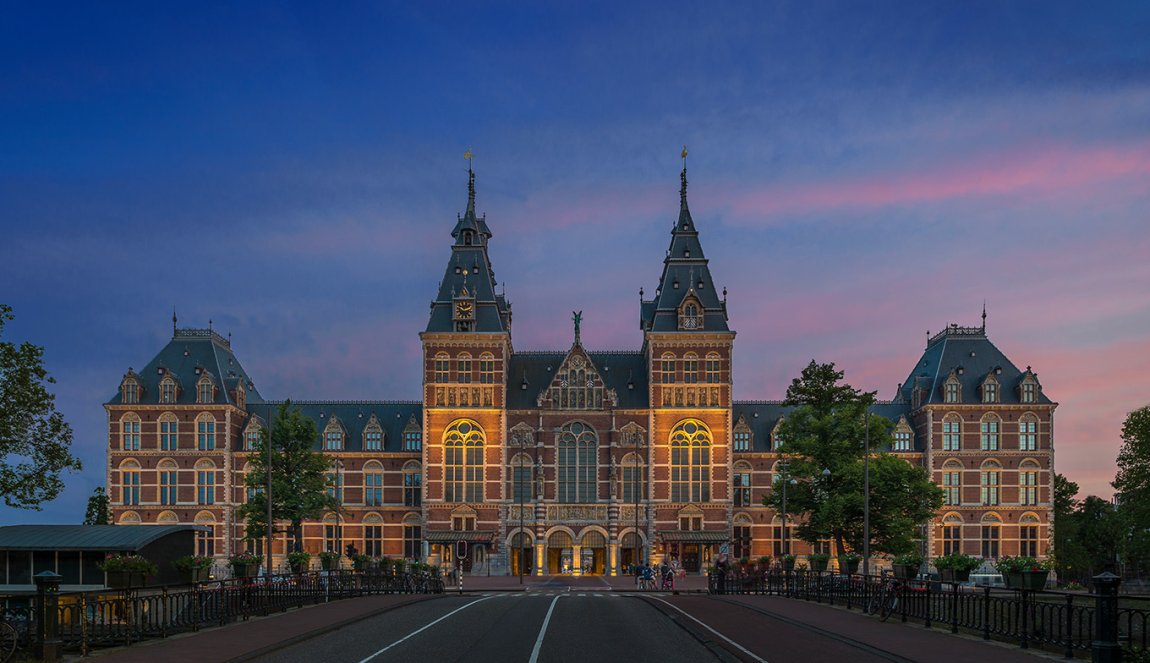
The 19th century was defined by looking back: architects employed Neoclassicist, Neo-Renaissance and Gothic Revival styles, culminating in the eclecticism of the second half of the century. This was the time that one of the Netherlands’ best-known architects was working: Pierre Cuypers, also known as P.J.H. Cuypers, built Amsterdam’s Central Station, the St. Bavo Church in Haarlem and, most importantly, the Rijksmuseum. Completed in 1885, it is one of the major examples of the Gothic Revival style.
One of the reactions against the revivalism and historicism of the 19th century was Art Nouveau, or Jugendstil, the highly decorative elements of which can still be seen in many Dutch cities: think stained glass, floral motifs, wrought-iron embellishments, bays and loggias, and asymmetrical lettering. The Huis van Lorrie in The Hague and the Hotel New York in Rotterdam are prime examples.
Rationalism and the birth of modernism

In the early 20th century, the joyful abundance and romanticism of Art Nouveau was absorbed into modernism. Logic, functionality and straightforwardness were the order of the day. The architect that is primarily associated with this movement is H.P. Berlage. His famous stock exchange, the Beurs van Berlage in Amsterdam, combines Art Nouveau elements with a strong sense of clarity and renewal. Karel de Bazel is another famous proponent of Dutch rationalism. One of his best-known buildings, De Bazel, now houses the Amsterdam City Archives.
From rationalism to expressionism: The Amsterdam School
From around 1910, several new architecture movements were born. Expressionism in architecture started out in Amsterdam and became hugely influential across the country, where it became known as the Amsterdam School. One of its main characteristics is dynamic exteriors, with undulating façades and unusual, rounded shapes. You can see this particularly well in the Het Schip building in Amsterdam, designed by Michel de Klerk. A less playful, more matter-of-fact variation of expressionism came from Willem Dudok, who was the town architect of Hilversum, and left his mark on the city’s character, with the town hall (see expert tips) as perhaps the most impressive example.
From De Stijl to Het Nieuwe Bouwen
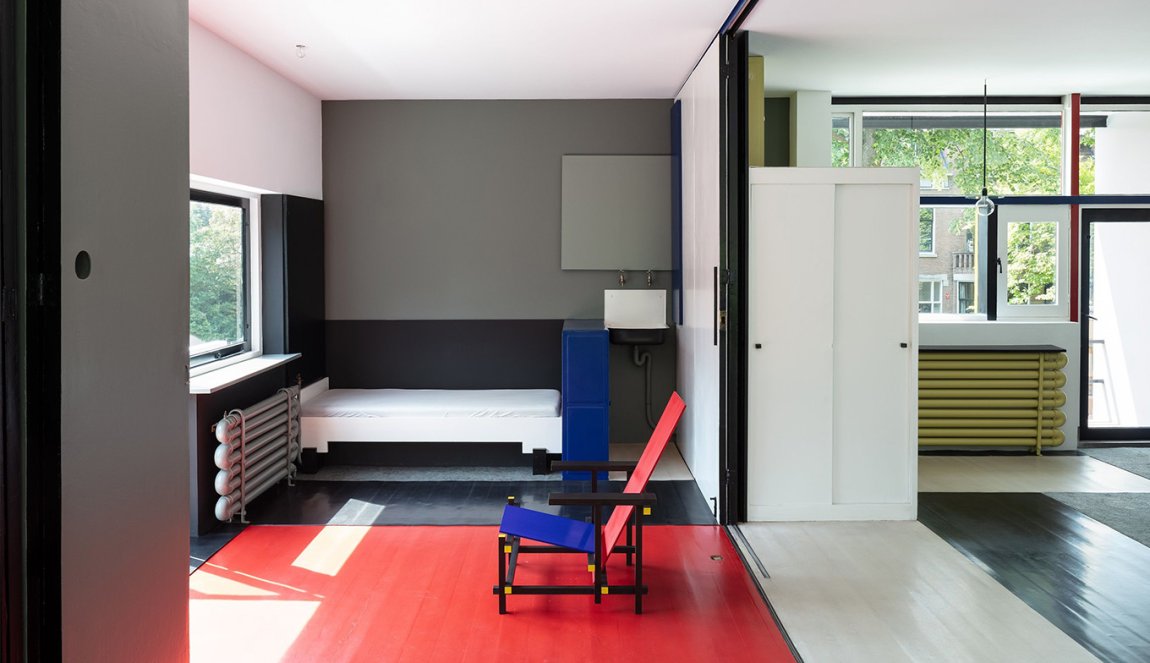
Straight lines and primary colours: De Stijl was a colourful, optimistic, functional and, above all, modern art and architecture movement that swept Europe in the first half of the 20th century. Piet Mondrian and Gerrit Rietveld were key members. Don’t miss the Rietveld Schröder House in Utrecht, a UNESCO World Heritage Site described as “an icon of the Modern Movement in architecture.” The Frisian town of Drachten, home to De Stijl founder Theo van Doesburg, is another destination for lovers of the movement. Here, De Stijl is everywhere – visitors can see the ‘parrot neighbourhood’ with its colour scheme by Van Doesburg and delve into the Museum Dr8888’s extensive collection of avant-garde art.
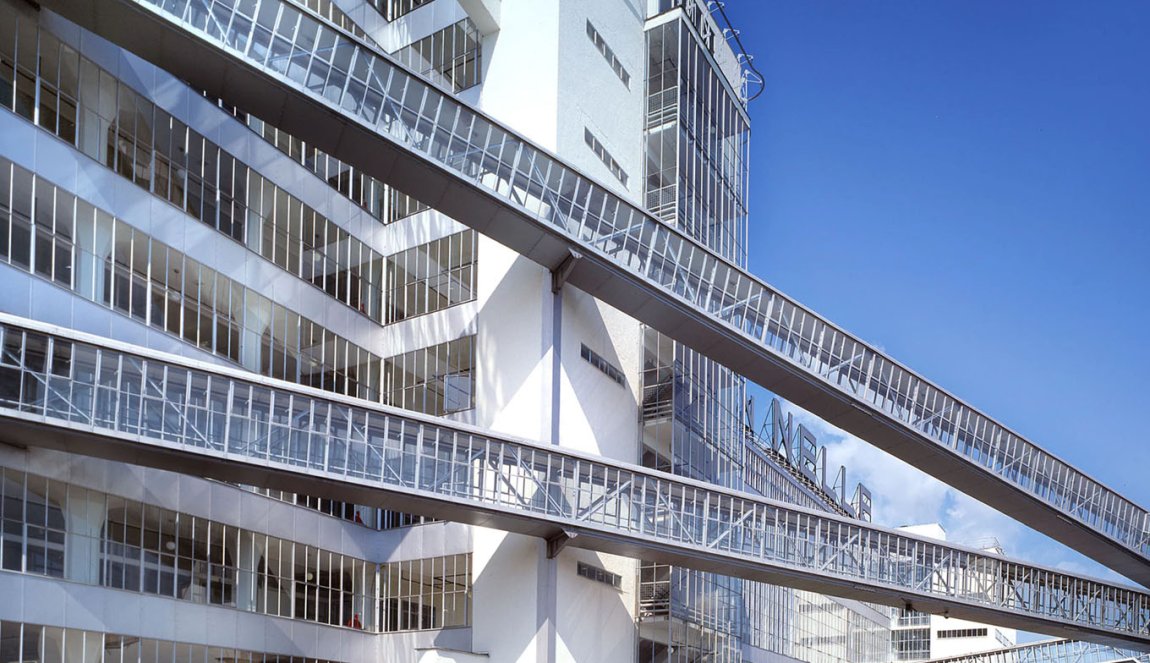
Form follows function: Lightness, functionality and modern materials such as concrete, steel and glass were the key elements of the movement that would come to define Dutch modernist architecture in the early-to-mid-20th century. It’s characterized by straight lines, glass façades and a studious avoidance of anything looking too much like craftsmanship or decoration. The Van Nelle Factory – another designated UNESCO World Heritage Site – and Huis Sonneveld, both in Rotterdam, are iconic examples.
The Glaspaleis in Heerlen is a gem of modernist architecture.
Postmodernism and today’s innovators
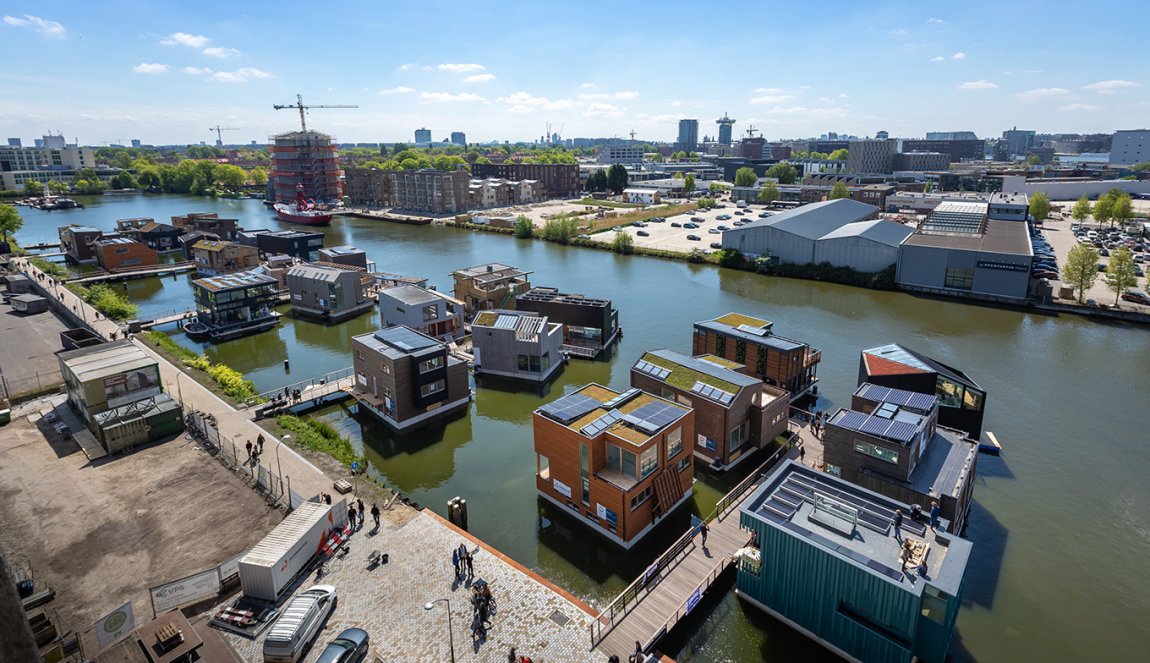
In the course of the 20th and 21st centuries, Dutch architects and their ideas continued to make an impact worldwide. Rem Koolhaas is one of the biggest names, having built striking buildings such as the Seattle Central Library and Beijing’s CCTV Tower. In the Netherlands, you can visit the Kunsthal in Rotterdam for your Koolhaas fix. Another hugely influential firm is MVRDV: don’t miss Rotterdam’s incredible Markthal or the Depot Boijmans Van Beuningen.
Sustainability and new ideas to minimize the inherent wastefulness of construction by embracing circular practices are a defining ideal for today’s architecture innovators. The home of the Netherlands Institute of Ecology in Wageningen and the Little C District in Rotterdam are particularly noteworthy examples. At the same time, architects are responding to new challenges such as rising sea levels with ideas such as the Schoonschip floating neighborhood and new approaches to building with timber. With that, we think it’s safe to say that the Dutch will continue wielding an outsized influence on architecture and building practices worldwide.
Tips from Indira van ’t Klooster
-
SCHUNCK Museum, Heerlen
Hosting walks, exhibitions and talks about urban planning, architecture centers are wonderful meeting places. This one is located in the Glaspaleis by Frits Peutz.
-
Dudok Architecture Center, Town Hall, Hilversum
Dudok was working in Hilversum for nearly 50 years, creating countless neighborhoods, parks and public buildings. The town hall is perhaps the most extraordinary. It’s home to the Dudok Architecture Center, which organizes weekly tours.
-
Arcam, Amsterdam
Architecture centers are a great introduction to the past and future of the city you’re visiting. Arcam is in a really special building by René van Zuuk – our view across the Oosterdok alone is amazing.